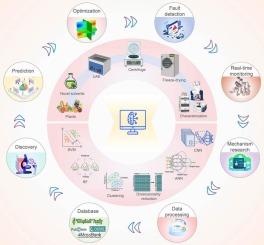超声辅助新型溶剂萃取植物有效成分的智能转化:机器学习和深度学习工具
IF 9.8
1区 农林科学
Q1 CHEMISTRY, APPLIED
引用次数: 0
摘要
超声辅助的新型溶剂萃取通过空化、机械和热机制提高植物生物活性化合物的产率。然而,新型溶剂的高可设计性、影响提取结果的多种因素、提取机理的复杂性以及提取设备的安全性,仍然给超声辅助提取(UAE)带来了许多挑战。本文重点介绍了利用机器学习和深度学习模型为阿联酋面临的挑战提供可行解决方案的进展,包括加速新型溶剂筛选、促进活性成分的发现、优化复杂的提取过程、深入分析提取机制以及超声设备的实时监测。讨论了模型可解释性、数据集标准化和工业可扩展性等挑战。未来的机会在于为超声相关技术开发通用预测框架,并促进人工智能、计算化学和可持续工程的跨学科整合。这种跨学科的方法与工业5.0的目标相一致,促进了向数字化、生态高效和智能提取系统的过渡。本文章由计算机程序翻译,如有差异,请以英文原文为准。


Intelligent transformation of ultrasound-assisted novel solvent extraction plant active ingredients: Tools for machine learning and deep learning
Ultrasound-assisted novel solvent extraction enhances plant bioactive compound yield via cavitation, mechanical, and thermal mechanisms. However, the high designability of novel solvents, the multiple influence factors for extracting results, the complexity of extraction mechanisms, and the safety of extraction equipment still pose many challenges for ultrasound-assisted extraction (UAE). This review highlights advancements in utilizing machine learning and deep learning models to provide actionable solutions for UAE challenges, which include accelerating novel solvent screening, promoting the discovery of active ingredients, optimizing complex extraction processes, in-depth analysis of extraction mechanisms, and real-time monitoring of ultrasound equipment. Challenges such as model interpretability, dataset standardization, and industrial scalability are discussed. Future opportunities lie in developing universal predictive frameworks for ultrasound-related technologies and fostering cross-disciplinary integration of AI, computational chemistry, and sustainable engineering. This interdisciplinary approach aligns with the goals of Industry 5.0, fostering a transition toward digitized, eco-efficient, and intelligent extraction systems.
求助全文
通过发布文献求助,成功后即可免费获取论文全文。
去求助
来源期刊

Food Chemistry
工程技术-食品科技
CiteScore
16.30
自引率
10.20%
发文量
3130
审稿时长
122 days
期刊介绍:
Food Chemistry publishes original research papers dealing with the advancement of the chemistry and biochemistry of foods or the analytical methods/ approach used. All papers should focus on the novelty of the research carried out.
 求助内容:
求助内容: 应助结果提醒方式:
应助结果提醒方式:


